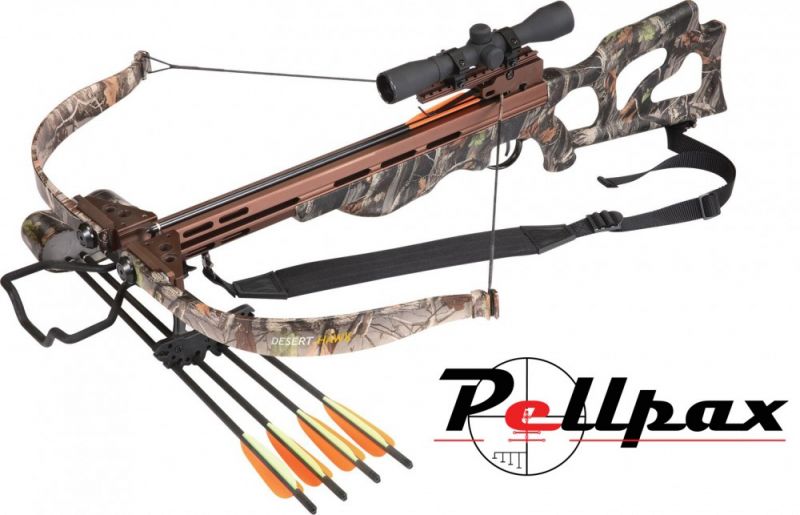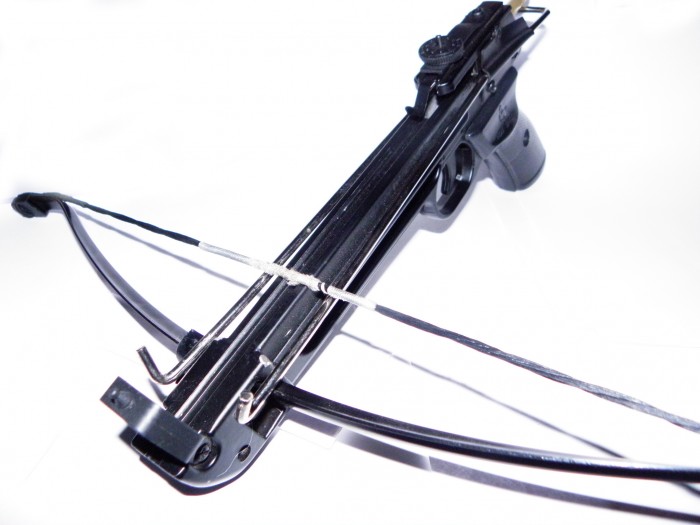Our resident weapons enthusiast Steph Brooks gives us the lowdown on everything you need to know about crossbows. from different types such as compound and recurve, to bolts and other accessories, and more. Read on to find out…..

So you’ve been watching The Walking Dead, have you? Daryl Dixon’s nifty crossbow skills may be new to you, but they have a very long provenance, going back thousands of years. Crossbows have been weapons of choice since their invention in rural China around the 6th century BC. Sun Tzu’s influential book “The Art of War”, which is dated around 500 BC, mentions the crossbow specifically in several chapters.
The Crossbow did not see widespread use until the battle of Hastings (1066) where crossbows were used by the French to successfully invade Britain. These crossbows used a recurve design, essentially a hunting bow laid sidewards and mounted onto a stock. The advantages of this design were that because the crossbow could be drawn with both hands it could be much more powerful than a standard bow allowing them to punch through conventional armour.
Today, crossbows are used mainly for target shooting and archery competitions where their power and accuracy allows for longer effective ranges when competing. Crossbows are also used for hunting in several parts of the world, but not in the UK where bow hunting has been illegal since 1965. The most up to date version of this law, the Wildlife and Countryside Act 1981 did nothing to change this and crossbow hunting looks to remain illegal for the foreseeable future.
Recurve or Compound Crossbow?

There are essentially two different designs of crossbow, the recurve crossbow design, detailed above, and compound crossbows which use a series of cams to allow for more power compared to recurve bows, with shorter and sturdier limbs. Compounds use their system of cams to allow for much easier cocking and don’t require the same level of physical fitness to draw as a recurve bow of similar draw weight.
Another advantage of compound bows is that the trigger box doesn’t hold the peak tension of the bow string reducing wear on the trigger sears over time. Compound crossbows also shoot the bolt much faster for the same draw weight leading to flatter trajectories. The compound crossbow also features slimmer and sturdier designs which maintain great balance between the hands while shooting.
When it comes to recurve bows, their more traditional design is simple and effective and has been an useful tool for many centuries. Compared to the compound bow there is much less that can go wrong and when something does go wrong a bow press is not required to re-string it. If you like the idea of doing all the maintenance work yourself then recurve crossbows are the way to go.
Recurve crossbows are also cheaper than their equivalent in compound and also tend to be lighter and easier to aim. The compound bow is much easier to re-string with no special tools such a bow press required. Recurve crossbows are also more silent to shoot although the difference is not that significant, and since hunting is illegal this is not much of a consideration.
Crossbow Bolts
Instead of using traditional arrows that are used in archery, crossbows use bolts, which differ from arrows as they do not feature stabilising vanes at the back and also tend to be shorter. In conversation the words bolt and arrow are interchangeable so be aware when purchasing, particularly online.

The main body or “shaft” of the bolt can be made from a variety different materials which used to be wood but are now usually made from carbon or aluminium. Wood and plastic have a habit of splintering when striking a hard surface where as aluminium and carbon are just as lightweight, but far more resilient. Wood and plastic bolts are only really suitable for casual shooting with pistol crossbows. Carbon bolts are stronger than their equivalent in aluminium but do tend to be more expensive.
There are also two types of knocks available, half moon, which feature a concave indentation at the end, or flat. Different crossbow manufacturers recommend different knocks but the majority seem to prefer the half moon. The reason for this is that the indentation helps the bolt sit better on the string, increasing accuracy.
When it comes to the other end of the crossbow, there are several points available with the majority being variations of the broadhead designed for hunting. Here in the UK, the only points available are field points which are just sharp enough to get stuck in a target without passing all the way through or destroying it. These field points generally weigh between 125 – 150 grain with each crossbow preferring a different weight. When selecting a different bolt make sure that the bolts you buy are either the same weight or heavier than your crossbows recommended weight. Shooting lighter bolts can be very dangerous as it can cause the crossbow to dry fire which can break the limbs and will also void your warranty.
Crossbow Accessories: Scopes, Sights & More
There are many accessories that can be attached to a crossbow with the majority of crossbows, particularly compound models featuring rails that allow for the fitting of scopes, laser sights and red dot optics. With some of these crossbows shooting further than conventional air weapons, a set of optics might be the right choice.
You can either go for a conventional rifle scope with ring mounts and seeing as crossbows are capable of shooting at great range a scope such as the Hawke Vantage 4-12×40 that offers a little more zoom than standard 3-9×40s. Another option is a red dot or reflex sight that projects a red, or green, laser dot onto a glass screen allowing for easy aiming that is perfect for mid powered crossbows. For shorter range crossbows, a laser sight might be of use. These sights project lasers onto the target allowing you to see precisely where you are aiming but are only useful at short to mid range and are better suited to night time shooting where the laser is more visible.
Another accessory that is essential for any serious crossbow owner is lubrication, since the string needs this on a fairly regular basis. How often the string needs lubing depends on a variety of things, such as how often you shoot and how high the draw string is on your crossbow. Make sure to apply the wax using your fingers right along the length for the string except for the part that is above the arrow rail as it will gum up the trigger box. The best waxes are made specifically for crossbows but beeswax also does a great job.
Conclusions
Crossbows can be very effective tools in the right hands and combine the fun of a bow and arrow with the customisability and precision of a rifle, leading to a hobby that many people enjoy all over the country, with several ranges and clubs springing up to cater to everyone from beginners to experienced shooters.
Check out our range of crossbows here. And check out our archery shop here.
